IT is the most wonderful time of the year, and for some Gold Coasters the chance to celebrate another Christmas isn’t something they will be taking for granted.
The blessed, the lucky or the straight up hard working, over the next 12 days the Bulletin will be looking at the Miracles of Christmas.
After a year of doom, gloom and a pandemic we will be showcasing the Gold Coasters who have something to be thankful for as part of our series.
DAY 10: Miracle mum now ready to live again
THIS time last year Carly Haynes was facing a question no young mother should have to contemplate – how to die well.
Diagnosed with stage 4 bowel cancer, the Terranora woman began chemotherapy on December 23, 2019.
A mother of a seven month and two-and-a-half year old, she had just days earlier been given the devastating news that without treatment she had six months to live and would get to this Christmas – if she was lucky.
She is now no longer terminal after defying all odds, thanks to the team at the Gold Coast Private Hospital, and wants to encourage others to always advocate for yourself and the medical team you deserve.
“I was 36 when I was diagnosed,” Ms Hayne said.
“I had just had a child but it wasn’t unhealthy, there were no glaring signs.”
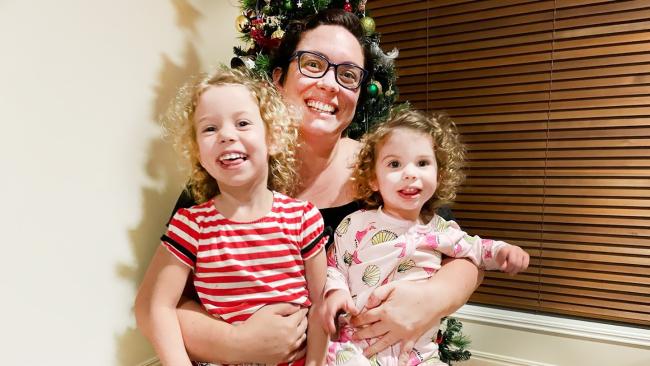
As a pathology collector, she had always taken a proactive approach to health, with regular checks and blood tests when healthy to ensure she had a baseline on record.
“I had a delayed diagnosis which can happen when you’re younger as bowel cancer is incorrectly considered an older person’s disease,” she said.
“Because I had recently given birth a lot of my symptoms were put down to hormones. It was one night when I was leaning over my daughter’s cot, I thought I was leaning on a toy, but I realised it was a lump in my chest.
“I thought I should look at this.”
The next day Ms Hayne saw a doctor and within 48 hours she had undergone tests that confirmed the young family’s fears.
“I was told I had stage 4 cancer which had spread from my colon to my liver. They said at that stage I had probably had it for 5 to 10 years,” she said. “I couldn’t believe it, that meant I had it in my 20s. I had two pregnancies in that time and it was unnoticed.”
“I was eventually told by my doctor at the time it was inoperable, so my focus was on getting my affairs in order.”
With a background in the medical world Ms Hayne knew some of what she would have to navigate, however it was the weight of the grief of her family that hit her the hardest. “I really felt for my family, it’s you that has the cancer but they do the suffering,’’ she said. “You don’t understand how much people love their kids until you have had your own; so you know your parent’s heartbreak.”
She continued to fight and underwent chemotherapy to reduce the size of the 14 tumours on her liver.
“I went through that and was talking to my doctor at the time, it wasn’t a plan for getting it out of my system. There wasn’t hope in their plan, so I thought this isn’t good enough.
“I don’t want an exit plan, I want vision on how to survive.”
Three months later and against the prognosis, tumours had almost disappeared or significantly shrunk in size. Ms Hayne was filled with a new burst of hope.
“Until that point I had been told that operation was not an option for me but then I found Dr Harald Puhalla.
“He was confident and said we could deal with it and said we could move forward with a liver resection in June.
“Hearing that made so much difference, just to have that fight from your medical team.”
Since the operation Ms Hayne has been given the all clear and has been told there is no reason she won’t enjoy Christmases with her family into the future.
“It’s hard to adjust to. For the first three months you were trying to work out how to die well, and now for the rest of my life I’m trying to work out how to live well.’’
“It was the combination of chemo and surgery. I’m not totally in the clear.
“Data shows I am in the risk over the next five years but that statistic is so rigid. I can’t assume I’m going to die anymore.
It’s hard to get your mind around but I’m so thankful.
“I know it’s not the same for everyone, what I do think has an impact is the approach of the help you get.
“You need someone who fights for you, because at the stage I was at any chance was better than none.’’
DAY 8: ‘I THOUGHT I LOST MY BABY’: MUM’S FIGHT VAX FOR CHANGE
EVERYDAY is a Christmas miracle for Gold Coast mother Elisha Robinson who came close to losing her infant daughter to a rare strain of meningococcal.
Lilliana Sheridan was struck down with the virus while on a family holiday to Thailand in late 2018. Her limbs turned black and blue with sepsis.
The family was medevaced home following a mass community push, fearing at the time Lilliana’s legs would be amputated.

Two years on Lilliana is still struggling with the repercussions of the deadly disease.
Doctors are now concerned the growth plates in her legs are infected, meaning long-term impacts on her bone growth.
Between regular hospital visits and the 55 surgeries to remove dead tissue from her daughter’s leg, Ms Robinson has been advocating for more awareness of the vaccines available to new parents.
Under the national Immunisation Program babies are vaccinated for meningococcal strains A, C, W, Y in a combination shot.
‘BIZARRE’ POISON ATTACK ON PROMINENT PALM TREES
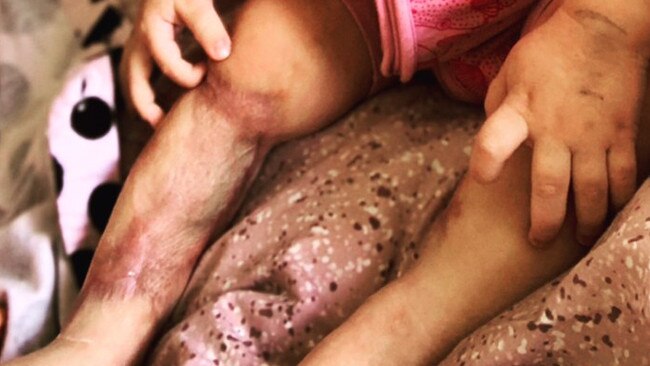
The rare strain B, which Lilliana contracted, is only funded in South Australia – meaning she was not protected from the virus.
Ms Robinson said she was surprised Lilliana, now two-and-a-half years old, was never offered the vaccine, even if the family had to pay for it themselves.
“I wish I knew what I know now,” Ms Robinson said. “It isn’t common knowledge among doctors that we can get this vaccine.
“It is $150 for one dose and you need two of them, so what I have found out is that it isn’t usually offered to people – but knowing that could have stopped any of this happening.
“Lilliana’s life has changed forever, but that wouldn’t have been the case if we lived in a funded state like South Australia or I had been told my options.
“It is expensive but an economic background shouldn't dictate the options given to someone about their healthcare.

“I was the most pedantic freak and would sterilise everything. I got her all the vaccinations we were told to get her, but this is just something that isn't known.”
While still struggling with chronic pain in her damaged limbs, Lilliana had grown to be a happy, feisty, and curious child, Ms Robinson said.
“She is only just at the age asking why she is different, and that is going to be a challenge she faces for the rest of her life – but she is walking, swimming and playing at kindy.
“I look at her everyday and pinch myself, I feel so lucky to have her still here with me.
“I remember how helpless I felt when she was diagnosed. It was unfathomable to me that she could come out OK.
“Now I feel so much hope and excitement for the future for the pure fact she is still by my side. Everyday is Christmas for me now.”
DAY 7: BACK IN THE GAME OF LIFE
ELLIOTT Cox has been fighting cancer but he is back kicking a ball thanks to a double lung transplant
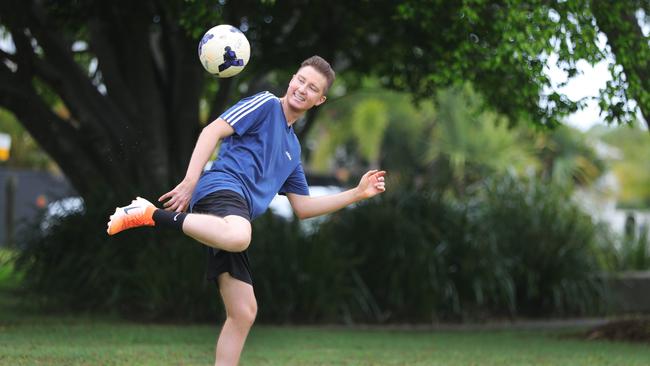
When the Bulletin met Mr Cox in February, he had bilateral-trapped lungs after the side effects of treatment for Hodgkin’s lymphoma.
He was in a wheelchair, had a painful cough, chronically exhausted and relied on around-the-clock assistance from his mum Julie Cox.
“I went to the doctor in 2015 with flu-like symptoms and they found a tumour the size of a dinner plate in my chest,” he said. “Life since has been a rollercoaster.
“I had multiple surgeries, radiation and stem cell transplants to treat my cancer and then was left with a number of issues to deal with.
“I had a dream of feeling better. I didn’t think it would happen for a very long time.”

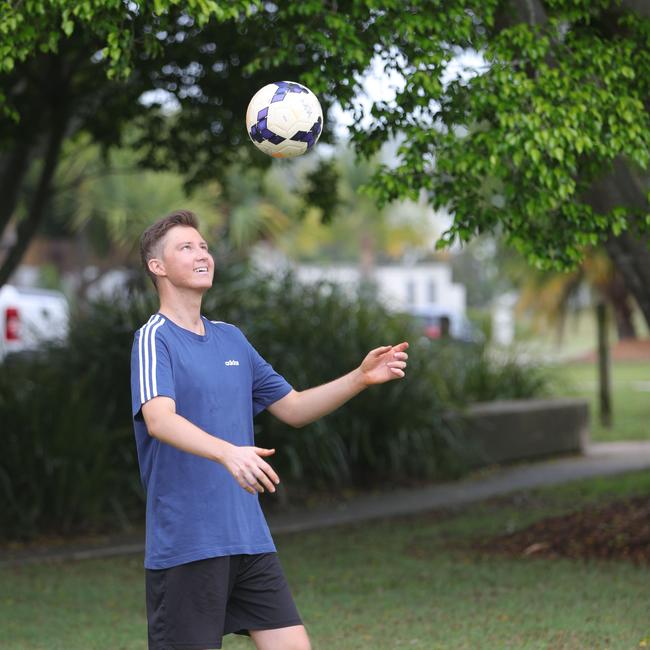
On June 13, Mr Cox collapsed at his Coombabah home and didn't have a pulse. After specialists brought him back, it was a race against time to find him a pair of healthy lungs.
“I spent four-and-a-half weeks in an induced coma and they didn’t think I would make it. At the twelfth hour they found a donor.”
Just 10 days after his transplant in July, he started walking and now has a dream to return to his beloved sport of soccer and compete at the World Transplant Games.
“It feels like Christmas every day because I wake up to the best present — a second chance at life.”
DAY 6: COAST TEEN CHEATS DEATH TWICE
AT just five-months-old Charlotte de le Garde was diagnosed with encephalitis, an inflammation of the brain commonly caused by a viral infection.
The Ormeau local lived a relatively stable life for 15 years until January this year when she found herself back in hospital after the condition returned after being dormant.
Her mum Melanie said the fact it returned was rare in itself, but what made the situation more unique was that her daughter contracted another form of the condition while in hospital for treatment, Anti-NMDA receptor encephalitis.
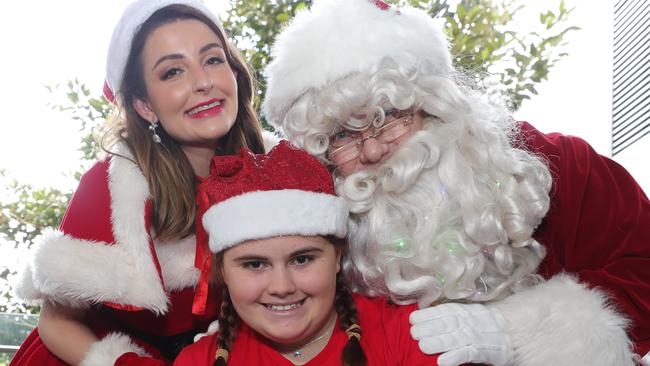
This is where the immune system essentially attacks the brain and is known as “brain on fire”, it causes seizures, hallucinations and other side affects.
“Her brain is still healing and many of the receptors are still swollen but we didn’t lose her so that’s the main thing,” she said.
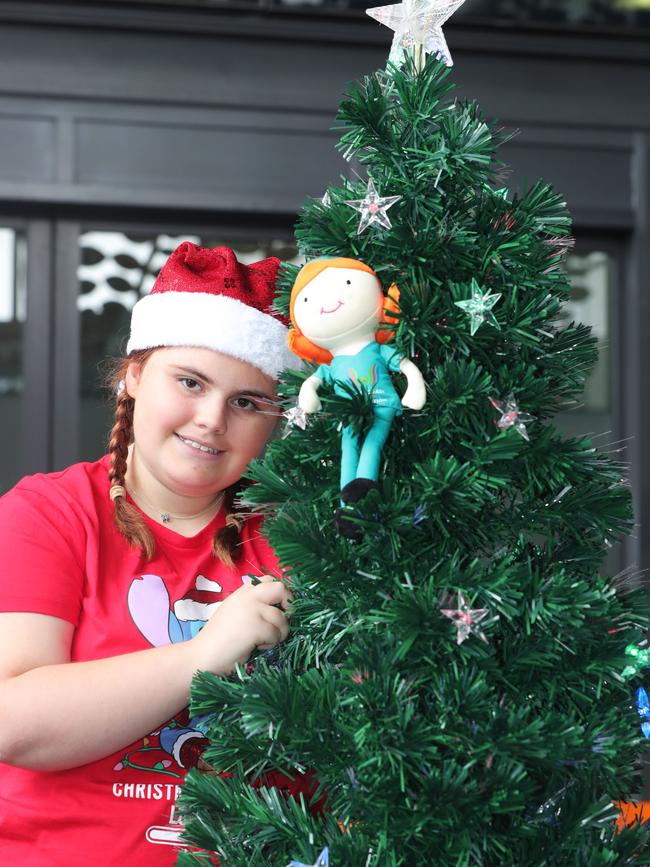
“Part of her brain is damaged and there will always be some significant lasting damage and just afterwards she was slurring her words and walking to one side, like she’d had a stroke, but she’s done a lot of work and doing incredibly well.”
Mrs de la Garde said Charlotte had spent a lot of time in hospital but that her team at Ormeau Woods State High School had been incredible.
“She used to say ‘why me’ but now she says she doesn’t want any other kid to get sick and go through what she’s been through,” she said.
Commonly misdiagnosed as a mental disorder or a child acting out, Mrs de la Garde credited doctors at Gold Coast University Hospital for picking up that it was Anti-NMDA receptor encephalitis.
“Some days she takes it in her stride and others days are worse than others,” she said.
“But it’ll be nice to have her home at Christmas and not in hospital.”
DAY 5: SCAN LIT UP ‘LIKE SURFERS PARADISE AT NIGHT’
CANCER survivor Helen Delaney’s PET scan lit up like “Surfers Paradise at night” when she was diagnosed with stage 4 lung cancer and given eight months to live.
Now two-and-a-half years later, thanks to what she calls her “miracle juice”, the Gold Coast grandmother is gearing up for another special Christmas with her family.
“The primary cancer was in the left lung and it was in the adrenal gland and in the bowel. My PET scan lit up like Surfers Paradise at night. There was so much cancer around. It was scary to be told you are not going to live,” she said.
RAIN ENDED BUSHFIRE SEASON … BUT IT’S NOT ALL GOOD NEWS

Mrs Delaney started on chemotherapy, but it didn’t have any effect on the cancer which continued to grow. Her oncologist decided to put her on immunotherapy, a drug called Nivolmab, which had been tested on melanoma patients.
“They had just started giving it to people with lung cancer. I was one of the very lucky ones who reacted so well to it that every scan I had every three months after that, my tumours actually shrunk.”
FULL DIGITAL ACCESS: JUST $5 A MONTH FOR THE FIRST THREE MONTHS
The Pacific Pines woman attends the Gold Coast University Hospital once a month for the lifesaving treatment which is administered through a port-a-cath. Her treatment times have reduced from fortnightly and only take about half an hour.
“Now, after being told I had a terminal illness and not long to live, I have no active cancer cells. I have tumours and I have to remain on the Nivolmab, but I am alive and as you can see, I am extremely well. It’s incredible.”
Mrs Delaney considers herself one of the lucky ones and is looking forward to the future, including planning her 60th birthday party in April next year.

PRESSURE FOR TRANS-TASMAN BUBBLE TO OPEN SOONER FOR ECONOMY
“I never thought I was going to make it, it’s going to be a big bash,” she said.
“You find strength where you don’t know you have strength. You learn to ask for help. And keeping positive is the biggest thing you can do.
“And just fight. Get out there and try to live life to the full.”
Gold Coast Health cancer and blood disorders ambulatory care clinical nurse consultant Debbie Royal said: “With immunotherapy, or targeted therapy, it knows exactly where it needs to go to do the job of eradicating or keeping the cancer at bay.
“It’s such an incredible pleasure to see someone who was quite unwell at first coming with a diagnosis as Helen had and then having to go through chemotherapy which can be really difficult, now she has a big smile on her face. She brightens up all of the nurses days and patients around her.”
DAY 4: TWIN BROTHERS MAKE IT HOME FOR CHRISTMAS
BRAVE twin brothers born with a rare genetic condition are finally able to receive lifesaving infusions at home thanks to the Gold Coast Hospital Foundation (GCHF).
Gold Coast brothers Louis and Theo Hankey, 18-months-old, have a condition called congenital nephrotic syndrome. It is a kidney condition that begins in infancy and typically leads to irreversible kidney failure by early childhood.
It is estimated there is a 200,000-to-one chance of getting this particular genetic condition and for non-identical twins to both have the same condition is thought to be unheard of.
Mr Hankey said his sons visited Gold Coast University Hospital twice a week to have lifesaving infusions. The treatment keeps a certain protein at safe levels.
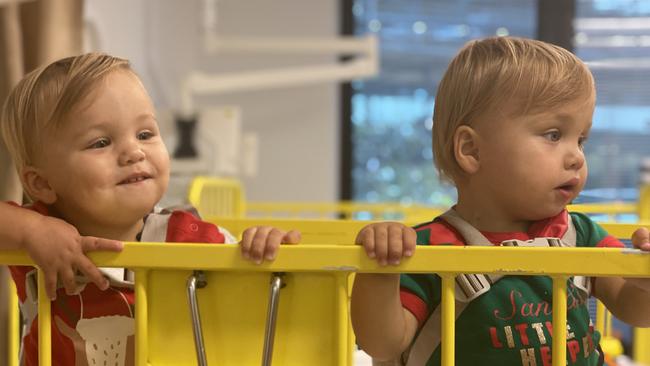
But thanks to the GCHF’s Scrub Up September campaign, which raised more than $50,000 for sick kids across the Gold Coast, the twins have been given a portable infusion pump.
It was made possible thanks to a large donation from the James Frizelle Charitable Foundation.
“It’s great for us as a family because it gives us more freedom, and makes our lives a little bit more normal. But I’m sure the boys will miss the nurses. They get so much attention from everybody, it’s really cute.”
Foundation chief executive Ben Cox said the twins were ambassadors for this year’s campaign and were incredibly brave youngsters.

“Louis and Theo are two of thousands who need our help every year,” he said.
“As well as exceeding our goal of $50,000, we are excited to share the news that the twins’ portable pumps were funded. This allows them to have their lifesaving infusions at home.
“We are humbled by James Frizelle Charitable Foundation’s contribution that will allow the boys to be home for Christmas.”
DAY 3: GOLD COAST HEALTH WORKERS SAVING LIVES
GOLD Coast Health’s diabetes education program is exceeding national benchmarks for long-term blood glucose control, giving locals the best odds of managing the chronic disease.
Chronic diseases program nurse unit manager Sharon Leslie said the standard measure for long-term diabetes control – known as the optimal glycated haemoglobin (HbA1c) target – in people who have it is over 7 per cent.
“This is the gold standard for measuring long-term diabetes control, and Gold Coasters who take part in our education program consistently rate significantly better than that target when they exit it,” she said.
Each year nearly 700 locals participate in diabetes education at Robina Health Precinct and Helensvale Community Health Centre. Diabetes nurse educators at the centres are assisted by a podiatrist, pharmacist, dietitian, social worker and exercise physiologist to help diabetes sufferers.
‘I THOUGHT I WAS F****D’: CROSS REVEALS BRUSH WITH DEATH
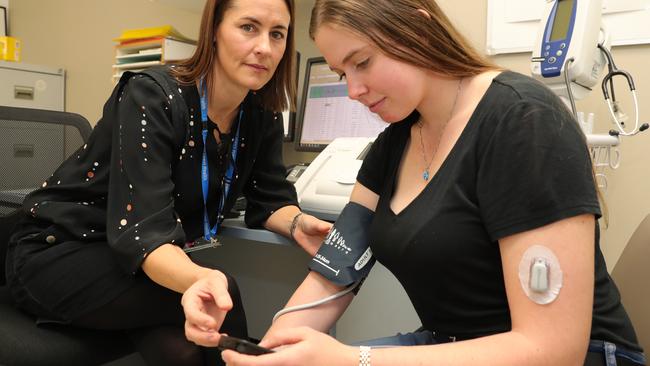
Tallebudgera’s Grace Mitchell was 12 when she was diagnosed with Type 1 diabetes and has been connected to an insulin pump ever since.
She’s now 20 and said the multidisciplinary care she’d received through the education program had kept her diabetes and overall health on track.
“It takes a lot of work from different people to manage the various aspects of my diabetes, so
having the access to all that support here is wonderful,” she said.
Ms Leslie said the hospital’s team of diabetes nurse educators acted as case managers for the patients’ care and provided regular face-to-face and phone reviews until the patient’s target was achieved.
“We educate patients on everything from how to control the disease and avoid hospitalisation, to insulin administration and how to detect signs of hypoglycaemia and hyperglycaemia.
“Additionally, with thanks to technology, we are able to continuously monitor our clients’ glucose results remotely, which has been really useful, particularly during the COVID-19 pandemic.”
The Health of Queenslanders 2018 Report notes there were 24,361 registered cases of diabetes in the Gold Coast Health district in 2018, the third highest number in the state.
About 1.7 million Australians have diabetes, with 280 people diagnosed with the disease every day, making it the nation’s fastest growing chronic disease.
DAY 2: FINDING THE GOOD - WHY WAKING UP BLIND WAS A BLESSING
ELISE Osmand says being left temporarily blind in one eye in the prime of her life was a blessing, because it led to her finding out she had multiple sclerosis (MS).
Now the Mermaid Beach schoolteacher wants to help others get the early treatment they need.
“I was in Greece for a wedding last year and had slowly been losing sight in one eye, like I had a bit of make-up blurring my vision,” Ms Osmand, 28, said.
“It wasn’t until I woke up the next morning I realised I couldn’t see – everything on that side was pitch black.”
SMILES DENTISTS ISSUE SALES THREAT

After rushing to a hospital and navigating language barriers and hours of testing, the devastating diagnosis came back.
“I didn’t know much about MS at the time so I was devastated. I thought this was it, my mind jumped to the worst scenario.”
MS causes irreversible damage to the brain’s neurons.
“Attacks” can take many forms, including temporary blindness, numbness in areas of the body or extreme reactions and pain.
Emerging evidence shows that by the time MS is normally diagnosed, permanent damage has been caused to the brain tissue and spinal cord.
“Since then I have learnt so much. I thought I was OK because I was healthy, but this isn’t something I have control over.”
FORMER TITAN A LITTLE FISH CAUGHT IN A BIG POLICE NET

“On reflection, it was a huge attack but it was almost a blessing. No one wants to be in the exclusive MS club, but it meant I was treated straight away.
“Some people go years with nerve pain but no idea of their condition.”
Since her diagnosis Ms Osmond has worked as a grief coach to help others living with chronic disease and is playing a critical role in a new educational initiative to mobilise Australians to take fast action with MS.
“The attacks will still happen and the disease will progress, but I believe knowledge is power and the more we know about our condition we can protect our own brain health.”
DAY 1: GUARDIAN ANGEL – ‘I WOKE UP WITH A BROKEN FEMUR’
IN HIS early 30s it is hard to believe Shawn Komidar suffers from severe osteoporosis.
But that is a reality for the TAFE student Adviser who suffers from an undiagnosed illness that regularly results in broken bones.
“I thought I was just unlucky as a child. A broken arm every holiday, always at sport.
“It wasn’t until a woke up with a broken femur one morning I realised that I needed help,” the 34-year-old said.
IT COULD HAPPEN TO ANYONE: TEEN’S FIGHT TO SAVE GOLD COAST LIVES
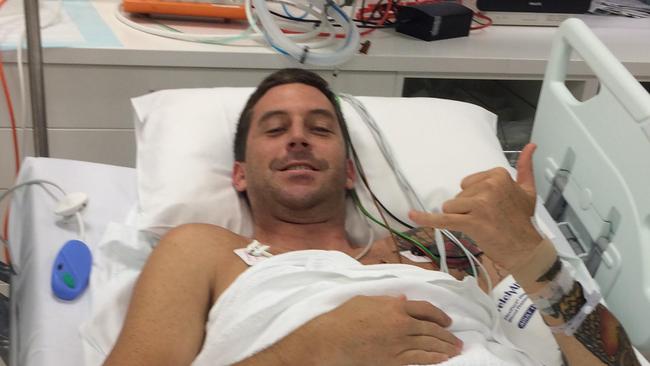
Despite his tough situation Mr Komidar has found hope thanks to Gold Coast University Hospital nurse practitioner Ann Robinson who he calls his guardian angel.
“I’ve never experienced this kind of care before,” he said.
“She is the one-stop place to go to for treatment, she has become a friend with me every step of the way.
“Planning ahead gives me a bit of anxiety. I don’t know what the future holds, because I am undiagnosed it is so good to have someone to bounce things off.”
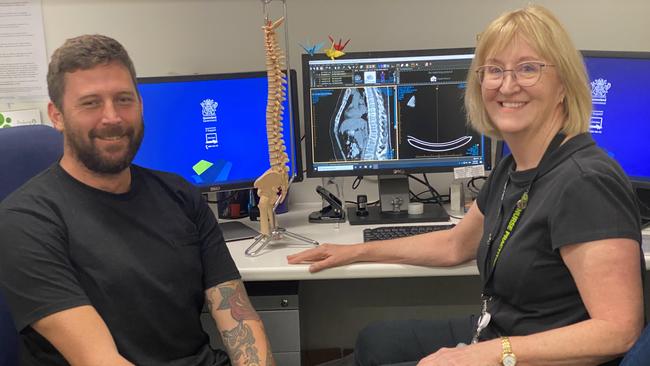
A Nurse Practitioner (NP) is a Registered Nurse (RN) experienced in their clinical specialty, educated at Masters Level, to provide advanced patient care. “Ann has been one of the best things to happen to me, for the first time in a long time I have one contact, one person to look out for me always.”

Add your comment to this story
To join the conversation, please log in. Don't have an account? Register
Join the conversation, you are commenting as Logout
Sharks unveil huge new stadium, $500m mega development
Southport Sharks has unveiled plans for a near-21,000-seat stadium and three residential towers in a massive redevelopment that could reshape the Gold Coast's sporting landscape.
Revealed: All Coast’s options for solving gridlock nightmare
The Gold Coast's population will surge by 350,000 in two decades, but the city's transport blueprint remains in limbo after light rail's dramatic cancellation. FIND OUT MORE